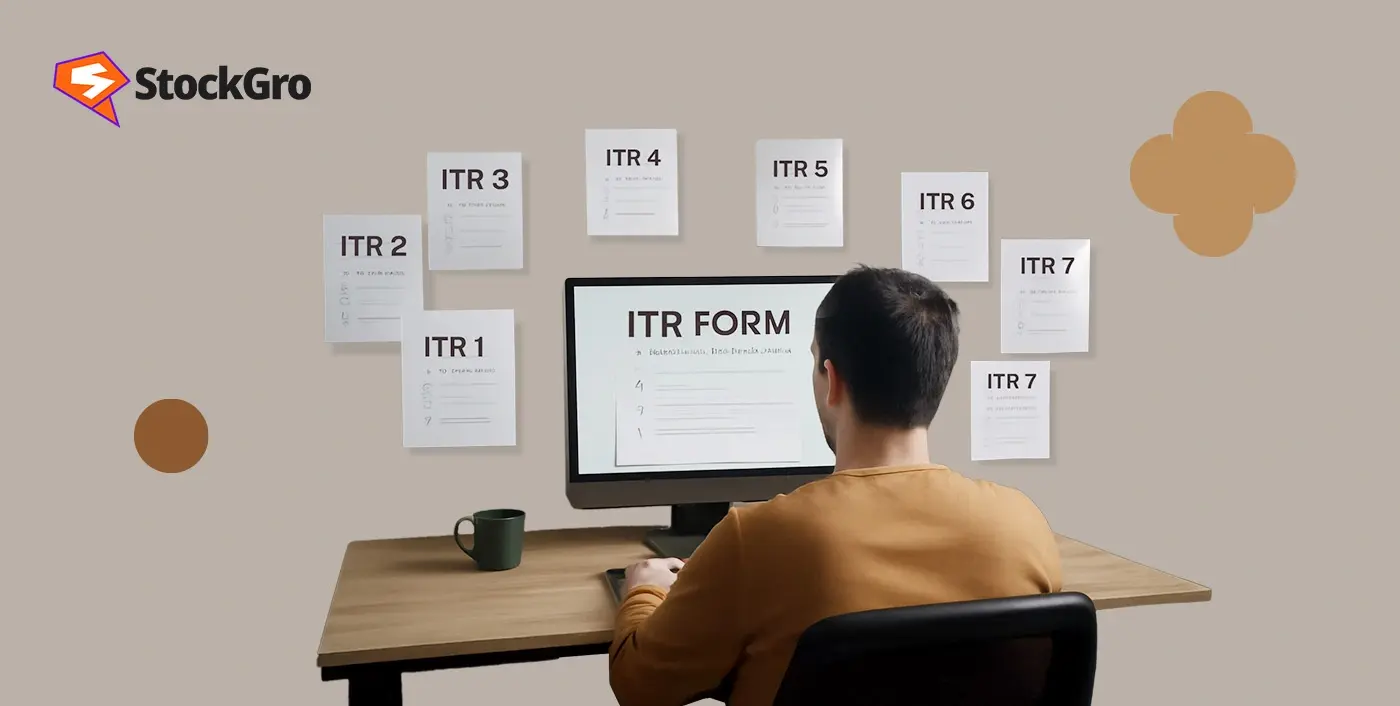
Selling a property or piece of land in India can lead to significant financial gains, but it also comes with important tax implications. Many individuals can overlook the impact of capital gains tax, which can reduce the overall profit from the sale. This blog provides insights into the tax on property sold in India.
What is capital gains tax?
Capital gains arise when you sell an asset for more than what you paid to purchase it. In simple terms, it’s the profit made from the sale of that asset. These gains are considered taxable income in India.
The capital gains tax on selling property in India are divided into two categories. These categories are based on the holding period of the asset. The two types are:
- LTCG (Long-term capital gains) tax: LTCG means the gains earned after holding the property for more than 24 months.
- STCG (Short-term capital gains) tax: STCG means gains earned after holding the property for less than 24 months. Before the 2024 Budget, the time duration was 36 months.
Tax on Sale of Property
The new rules for capital gains tax are applicable on properties that are purchased after 23rd July 2024. For properties purchased before this date, taxpayers have the choice between new rules and old rules depending on the one with lower tax liability.
The capital gains tax on sale of property (India) before and after 23rd July 2024 are as follows.
Old rules (before 23rd July 2024)
- LTCG: A tax of 20% is applicable if you sell a property after holding it for more than 36 months.
As per the old rules, the government provides the Cost Inflation Index (CII), which is used to adjust the purchase cost of the property for inflation while calculating the LTCG. This process is known as indexation.
- STCG: Gains earned by selling a property after holding it for less than 36 months are taxed at the slab rate of the taxpayer.
New rules (after 23rd July 2024)
- LTCG: A 12.5% LTCG is charged on gains on transfer of property held for a period of more than 24 months.
The indexation benefits are removed from the new rules.
- STCG: Gains earned by selling a property after holding it for less than 24 months are taxed at the slab rate of the taxpayer.
Exemption:
Section 54 of the Income Tax Act provides exemption from long-term capital gains tax, when an individual or HUF sells a residential property and reinvests the gains in another residential property in India.
This exemption can be availed when the new house is purchased within 2 years of selling the old house, or is constructed within 3 years.
From 1st April, 2023, the tax exemption is capped at ₹10 crores. Additionally, from FY 2019-20, after selling an old house, the taxpayers can invest the proceeds in two houses (without paying LTCG tax), if the capital gain does not exceed ₹2 crore, but this benefit can be claimed only once in a lifetime.
Also read: Direct vs. Indirect Tax: Understanding the Key Differences
Calculation of capital gains tax
Here is an example of calculating land sale tax in India-
Short-term capital gains
Let us assume that property was purchased on 1st June 2024 for ₹20,00,000 and sold on 1st April 2025 for ₹30,00,000.
The holding period, in this case, is lower than 24 months. Hence, STCG tax will be applicable at the tax slab of the taxpayer.
Assume that the taxpayer falls under the 30% slab rate, so STCG tax liability will be –
STCG tax = 30% of (Proceeds from selling the property – cost of buying the property)
STCG tax = 30% of (₹30,00,000 – ₹20,00,000)
STCG tax = ₹3,00,000
Long-term capital gains
Let us assume that the property was purchased on 1st January 2022 for ₹20,00,000 and sold on 1st January 2025 for ₹40,00,000.
As the holding period exceeds 24 months, LTCG will apply. The property is being sold after 23rd July 2024, the taxpayer will have the option of choosing between the new and the old rules.
- Case 1: Choosing 20% tax with indexation (Old rules)
In this case, to determine the capital gains, we need to calculate the inflation-adjusted price of the house –
Inflation-adjusted price = Cost of House * (CII in sales year/ CII in purchase year)
Inflation-adjusted price = ₹20,00,000 * (363/317)
Inflation-adjusted price = ₹22,90,220
Now, we will calculate the applicable tax at 20% rate.
LTCG = 20% of (Proceeds from selling the property – cost of buying the property)
LTCG = 20% * (₹40,00,000 – ₹22,90,220) = ₹3,41,956
- Case 2: Choosing 12.5% tax without indexation (New Rules)
In this case, a 12.5% tax will be applicable –
LTCG = 12.5% * (Proceeds from selling the property – cost of buying the property)
LTCG – 12.5% * (₹40,00,000 – ₹20,00,000)
LTCG = ₹2,50,000.
Recent property buyers who have not benefited significantly from indexation may find the new long-term capital gains rules advantageous because of the lower tax rates. On the other hand, long-term property holders may find it more beneficial to continue using indexation benefits.
An interesting read: Capital Gain Bonds – Section 54EC, Invest in PFC, NHAI, IRFC, REC
Special Considerations
Let us look at some important considerations and exceptions.
- Non-Resident Indian (NRI) – While selling property in India NRI, which has been held for over two years, the buyer must deduct 20% as TDS (Tax Deducted at Source) as LTCG tax.
Properties sold within 2 years are subject to a 30% TDS rate, which is deducted as STCG tax.
- Agriculture – The tax on agricultural land sale in India can be exempted under Section 54B if the proceeds of the sale go towards purchasing new agricultural land.
This exemption can be only availed by individuals and HUFs, and new land must be purchased within two years of selling the previous one.
Also read: Understanding Agricultural Income: Types, Exemptions, and Tax Implications
- Inheritance – If someone inherits a property, it is not taxable immediately, but it is taxable when the receiver sells it.
The tax on selling inherited property in India is calculated based on the original purchase price paid by the buyer before the property was inherited.
Conclusion
It is important for property owners to understand the method of tax on selling property in India. This helps in making better financial decisions. This also helps in paying taxes on time and avoids any penalty or fine. This knowledge helps you track your money more and maximise your savings.
FAQs
Is the ₹1,25,000 exemption on capital gains applicable on property?
No, the ₹1,25,000 exemption on long-term capital gains is not applicable to land or property. It is applicable to only financial assets, such as shares, ETFs, etc. And, in the case of financial assets, the holding period is 12 months for determining long and short-term capital gains, unlike 24 months in the case of property. Before the 2024 interim budget this limit was ₹1 lakh.
What if you incur a loss on sale of property?
A loss on the sale of property can be offset against a gain made on any other financial asset in the same financial year. Additionally, if the loss cannot be fully adjusted in that year, it can be carried forward for the next eight years and offset against future capital gains. Deductions can also be claimed for these losses, provided they are reported while filing your income tax return within the due date.
What is the major difference between old and new rules for LTCG tax?
There are two major differences between the old and new rules for LTCG tax. First, the indexation benefit, which adjusted the cost of buying an asset for inflation, has been removed, impacting how gains are calculated. Secondly, the tax rate has been reduced from 20% to 12.5%, offering lower tax liability but without the indexation.
How does removing indexation affect taxpayers?
When the government removes indexation, you lose the benefit of adjusting your property’s purchase price for inflation. Indexation was beneficial for those holding their property for long periods of time. For long-term property holders, this can significantly increase the tax burden even if the actual profit hasn’t grown much in real terms.
Should you follow old or new rules while paying tax on long term gains from selling property?
Choosing between old and new rules depends on the tax outgo. Taxpayers can calculate their total tax liability in both cases and choose the option with higher tax savings. Taxpayers must also take into account the time period since, in some cases, LTCG tax liability can be lower than STCG tax liability.

